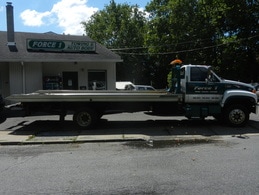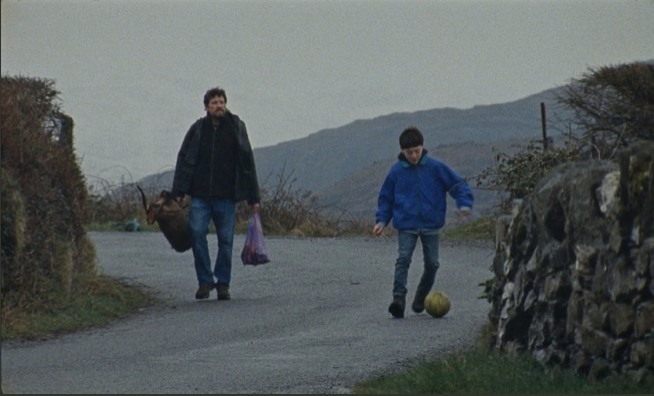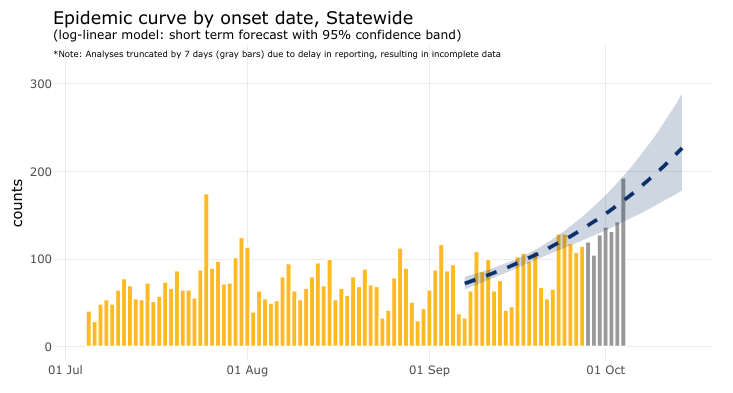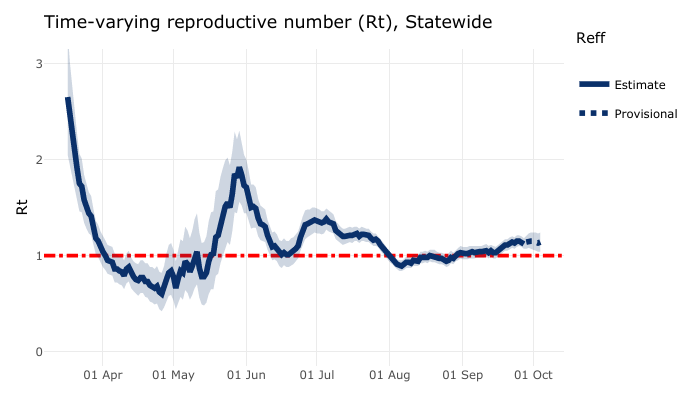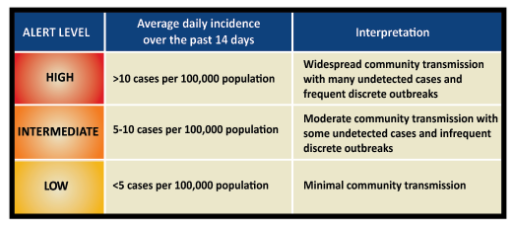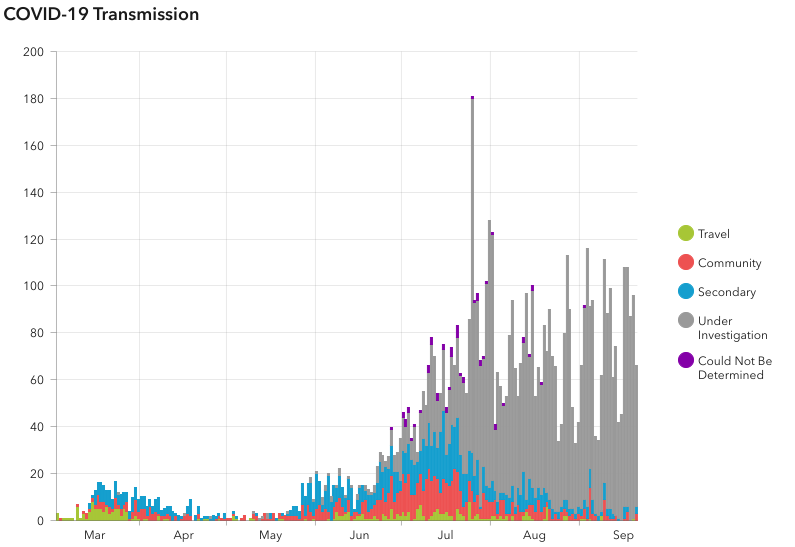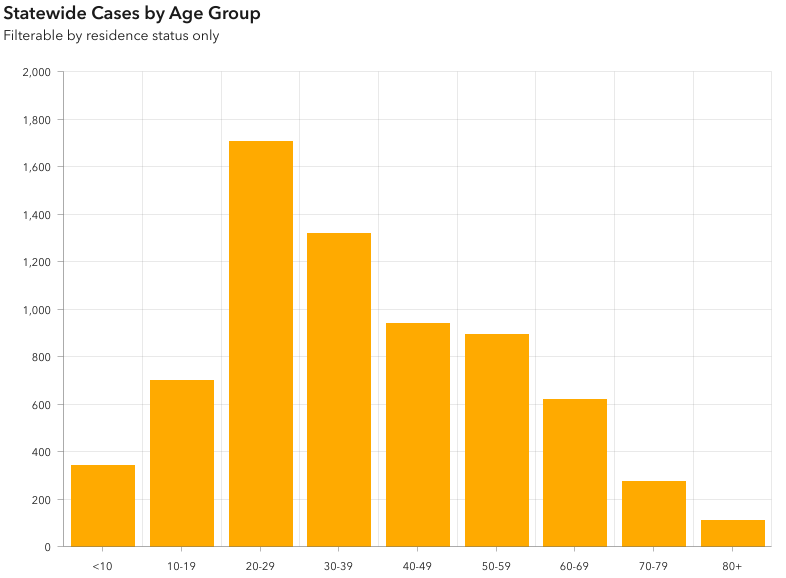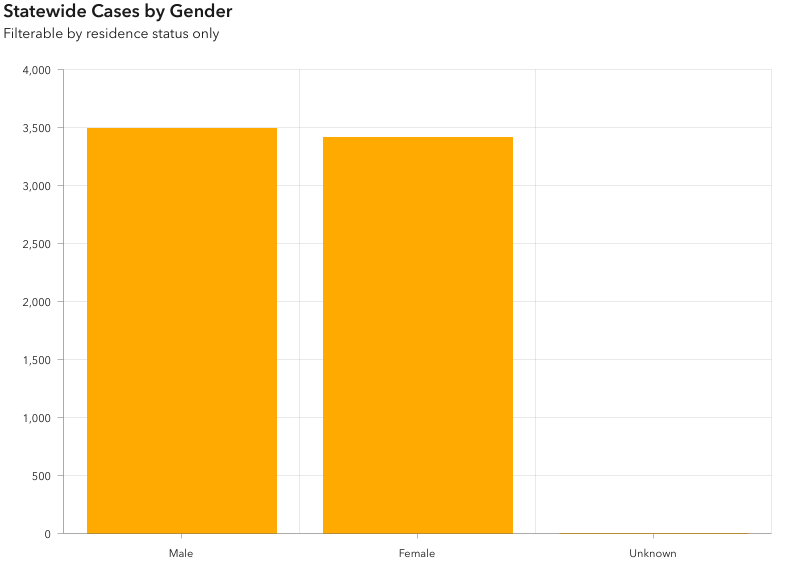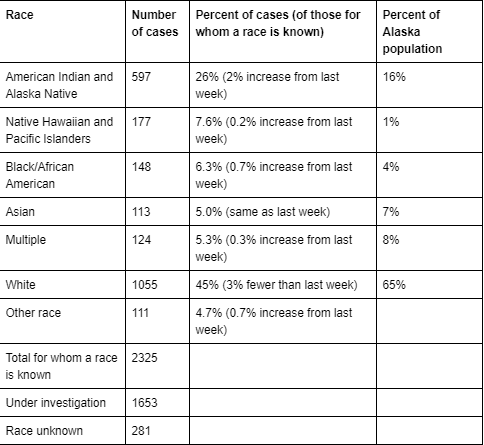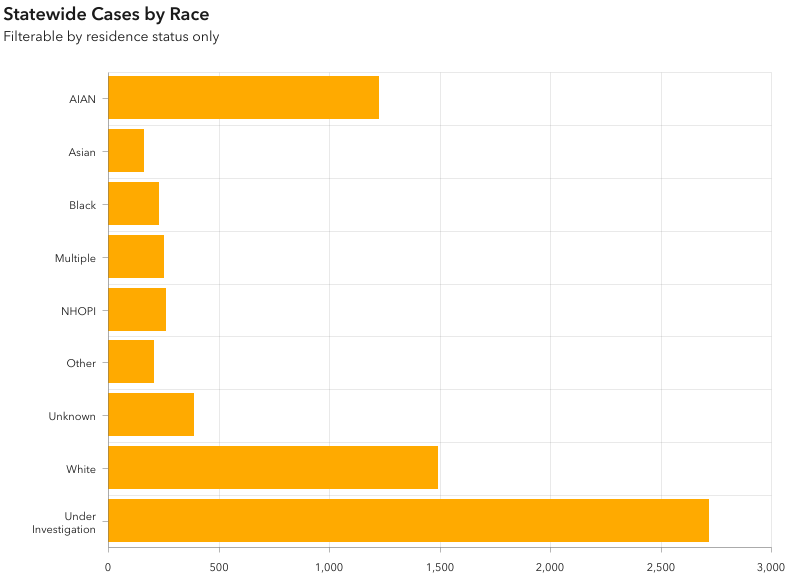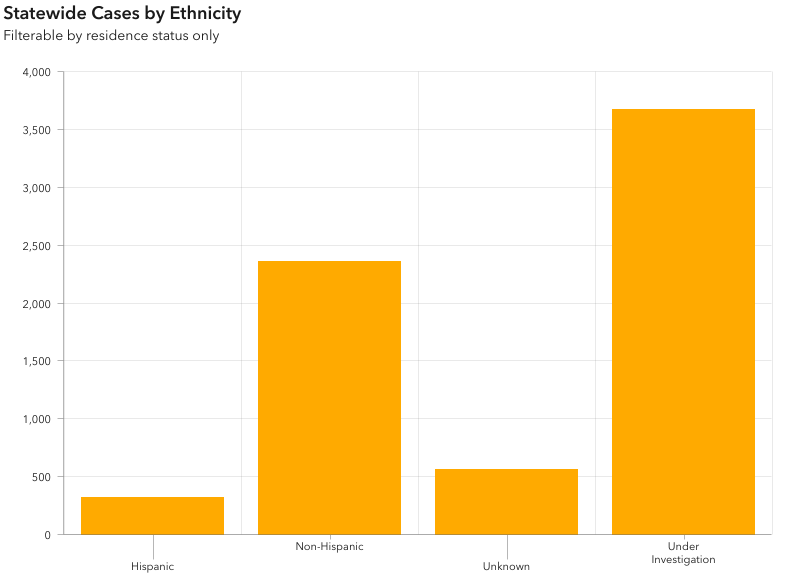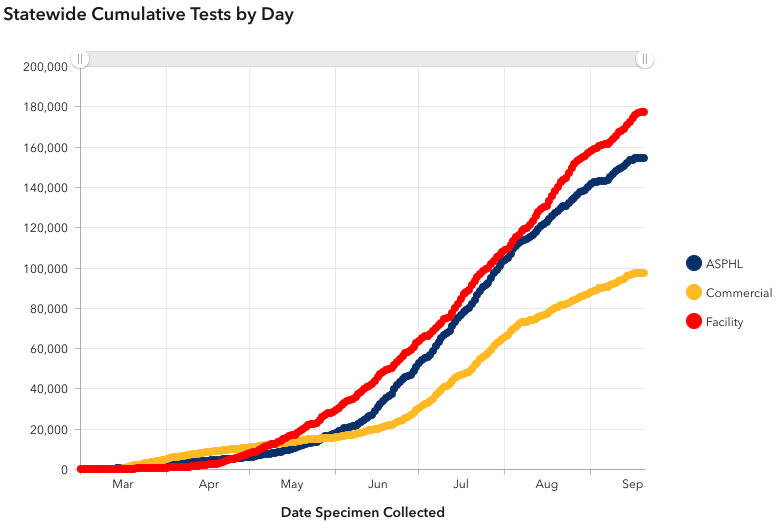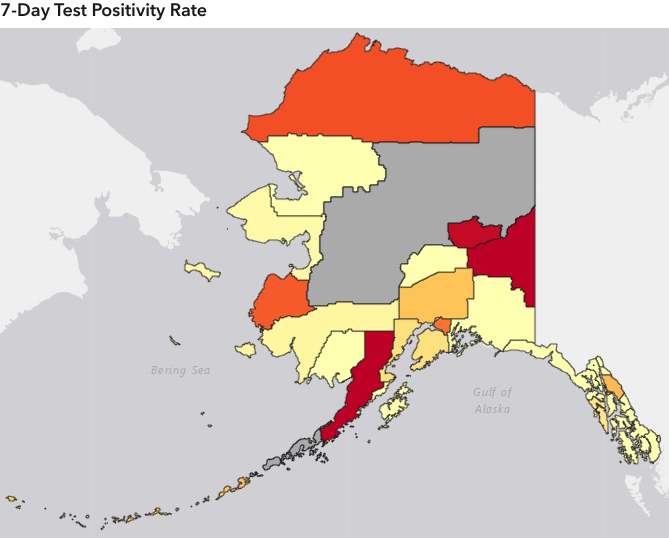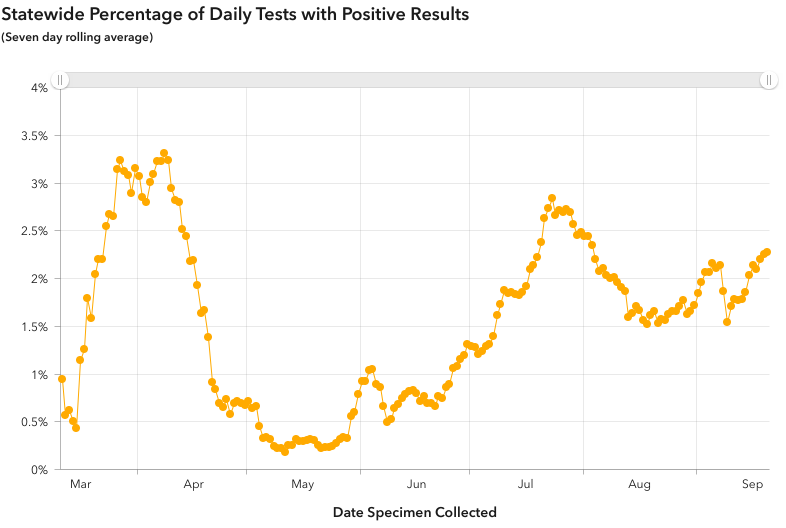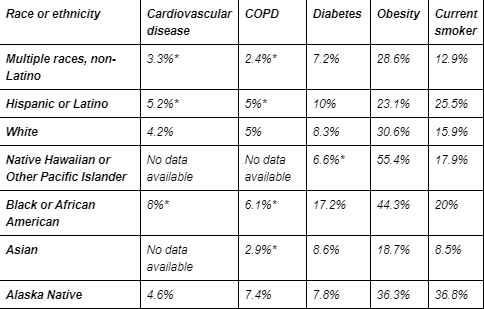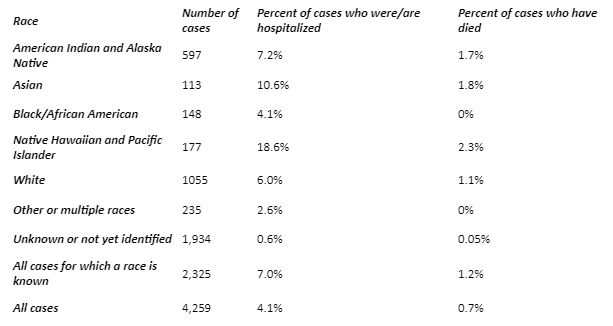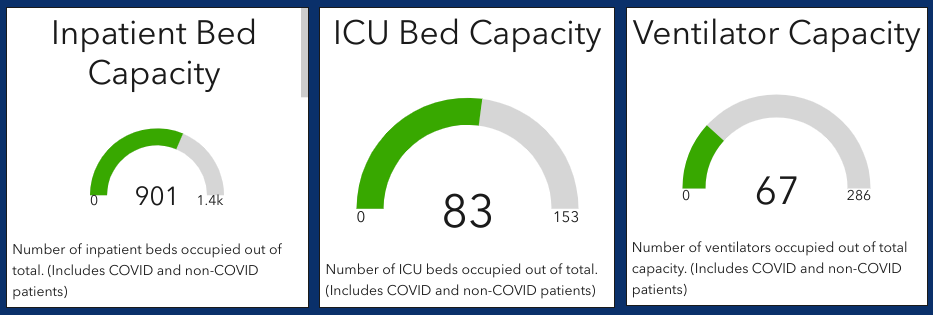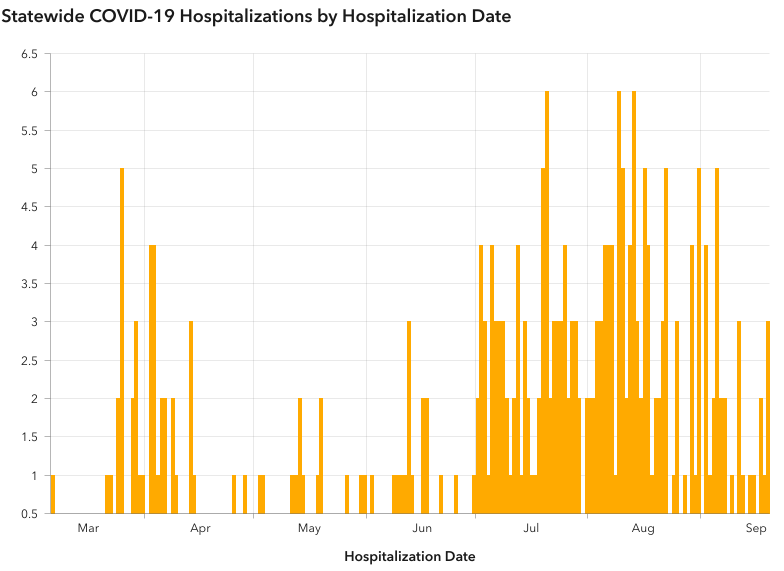Ready for reliable and friendly service in a towing company? Combined with competitive rates? Call Force 1 Towing and Auto Body in Catasauqua at 610-266-6721
This data summary covers COVID-19 in Alaska from Sunday, August 9th through Saturday, August 15th, 2020.
Background
The Alaska COVID-19 Weekly Case Update will be composed every weekend with data from the previous week and the report will be published by the following Wednesday. Data are continually updated on the Alaska Coronavirus Response Hub, which reflects the most current case counts. This summary presents data from the previous week and is a snapshot of the information available on known cases at the time.
Highlights
New cases
This week saw 554 new cases in Alaskans and 38 in nonresidents, for a total of 4,259 and 801 respectively. Several cases previously classified as resident cases have since been reclassified as nonresident cases after further investigation took place. 10 additional Alaskans required hospitalization this week for COVID-19, for a total of 154 since the epidemic began. Two additional deaths were reported this week, for a total of 28. By convention, deaths are counted based on the residency of the patient rather than where they contracted the virus.
Epidemic curve
This analysis projects growth or reduction in cases predicted in the coming weeks based on the growth of cases in recent weeks. The most recent 7 days (grey bars) are not included because there can be a delay in reporting data. This model assumes exponential growth or reduction in cases and can be a useful tool to visualize how quickly cases are increasing or decreasing. This curve does not project what might happen if more people start wearing masks or increase physical distancing; it assumes Alaskans and visitors to Alaska do not change their behavior. The dotted line is the average prediction, and the grey shaded area is estimated error for the predicted rise in cases. For a full description of methods, visit https://coronavirus-response-alaska-dhss.hub.arcgis.com/
Currently, cases are predicted to halve about every 22 days based on the current case trend, an improvement from last week, when cases were predicted to halve every 38 days; however, this will depend on a continued effort among Alaskans to slow the spread of transmission through physical distancing, masks and limiting contacts.
The Alaska COVID-19 Weekly Case Update will be composed every weekend with data from the previous week and the report will be published by the following Wednesday. Data are continually updated on the Alaska Coronavirus Response Hub, which reflects the most current case counts. This summary presents data from the previous week and is a snapshot of the information available on known cases at the time.
Highlights
- Alaska continues to see rapid increases in resident new cases
- The biggest increase this week was in Anchorage, which had 286 new cases, representing 14 more cases than last week and 52% of this week’s increase
- Total cases among Alaska residents rose 15% this week with 554 new cases
- The majority of new cases continue to be among Alaskans aged 20-29, with cases among Alaskans in their 20s and 30s still rising
- Most nonresident cases have been identified before the person had significant community interaction
- Most new cases in Alaskans are acquired from other Alaskans who have not traveled
- Transmission between Alaskans at social gatherings, within families, at community events, churches and bars has significantly contributed to the rise in cases
- Hospital capacity is currently adequate, but hospitalizations and deaths are increasing
- Alaskans should avoid gatherings, wear face coverings in public, keep six feet of distance from non-household members and practice good hand hygiene to slow transmission of COVID-19
New cases
This week saw 554 new cases in Alaskans and 38 in nonresidents, for a total of 4,259 and 801 respectively. Several cases previously classified as resident cases have since been reclassified as nonresident cases after further investigation took place. 10 additional Alaskans required hospitalization this week for COVID-19, for a total of 154 since the epidemic began. Two additional deaths were reported this week, for a total of 28. By convention, deaths are counted based on the residency of the patient rather than where they contracted the virus.
Epidemic curve
This analysis projects growth or reduction in cases predicted in the coming weeks based on the growth of cases in recent weeks. The most recent 7 days (grey bars) are not included because there can be a delay in reporting data. This model assumes exponential growth or reduction in cases and can be a useful tool to visualize how quickly cases are increasing or decreasing. This curve does not project what might happen if more people start wearing masks or increase physical distancing; it assumes Alaskans and visitors to Alaska do not change their behavior. The dotted line is the average prediction, and the grey shaded area is estimated error for the predicted rise in cases. For a full description of methods, visit https://coronavirus-response-alaska-dhss.hub.arcgis.com/
Currently, cases are predicted to halve about every 22 days based on the current case trend, an improvement from last week, when cases were predicted to halve every 38 days; however, this will depend on a continued effort among Alaskans to slow the spread of transmission through physical distancing, masks and limiting contacts.
Communities affected this week
New cases were found in Alaskans who are residents of the following communities:
Case rates and alert levels
The 7 day case rate map depicts cases adjusted by population for a given region (cases per 100,000 people). The regions are large because Alaska is a large state with few densely populated centers, so this case rate can only be meaningful across large regions.
Currently, Anchorage Municipality remains in the red and has gone from 14 to 14.6 in the last week; Juneau City and Borough has joined it with 16.5, significantly up from 8.5 last week. The Interior Region has worsened to 11.0 from 9.2, and the Northwest Region has worsened from 6.3 to 8.3. Next, Fairbanks North Star Borough and Kenai Peninsula Borough had 7.3 and 10.0; significantly worse than last week’s 4.6 and 5.9 respectively. Matanuska-Susitna Borough has held relatively steady at 5.1 from 5.8 last week. Northern and southern Southeast regions had rates of 6.3 and 7.2 this week respectively, while the Y-K Delta had a rate of 6.0 and the Southwest Region, 5.0. Most states use a 7 day case rate per 100,000 population to estimate trends in community transmission. Roughly, rates of >10 cases daily per 100,000 population correspond to widespread community transmission and >5 to moderate community transmission, but a sharp increase or decrease in these rates can help predict how the next week or weeks will look for the region.
7-day Case Rate Map (cases per 100,000 people)
New cases were found in Alaskans who are residents of the following communities:
- Anchorage (286), Chugiak (8), and Eagle River (12), for a total of 306 new cases in the Anchorage Municipality.
- Fairbanks (45), North Pole (6) and one in a smaller community for a total of 52 new cases in the Fairbanks North Star Borough
- Wasilla (27), Palmer (8), Willow (3), and Big Lake (1) for a total of 39 new cases in the Matanuska-Susitna Borough
- Seward (2), Soldotna (12), Homer (4), Kenai (10), Sterling (10), Anchor Point (1) and a smaller community (2) for a total of 41 new cases in the Kenai Peninsula Borough
- Cordova (1), Valdez (2), and 9 in a smaller community or communities in Valdez-Cordova Census Area, for a total of 12
- Yukon-Koyukuk Census Area (5)
- Juneau (38) and Douglas (2), for a total of 40 in the Juneau City and Borough
- Delta Junction (1)
- Ketchikan (3)
- Kotzebue (1) and 6 in a smaller community or communities in the Northwest Arctic Borough, for a total of 7
- Sitka (5)
- Haines (1)
- Petersburg (1)
- Kodiak (5)
- Utqiagvik (4) and one in a smaller community in the North Slope Borough, for a total of 5
- Nome (5)
- Bristol Bay plus Lake and Peninsula (1)
- Dillingham (3)
- Bethel (8) and one in a smaller community, for 9 total in the Bethel Census Area
- Unalaska (1)
- Metlakatla (1) and 7 in a smaller community or communities in the Prince of Wales-Hyder Census Area, for a total of 8
- Wrangell (1)
- Kusilvak Census Area (1)
- Yakutat plus Hoonah-Angoon (2)
Case rates and alert levels
The 7 day case rate map depicts cases adjusted by population for a given region (cases per 100,000 people). The regions are large because Alaska is a large state with few densely populated centers, so this case rate can only be meaningful across large regions.
Currently, Anchorage Municipality remains in the red and has gone from 14 to 14.6 in the last week; Juneau City and Borough has joined it with 16.5, significantly up from 8.5 last week. The Interior Region has worsened to 11.0 from 9.2, and the Northwest Region has worsened from 6.3 to 8.3. Next, Fairbanks North Star Borough and Kenai Peninsula Borough had 7.3 and 10.0; significantly worse than last week’s 4.6 and 5.9 respectively. Matanuska-Susitna Borough has held relatively steady at 5.1 from 5.8 last week. Northern and southern Southeast regions had rates of 6.3 and 7.2 this week respectively, while the Y-K Delta had a rate of 6.0 and the Southwest Region, 5.0. Most states use a 7 day case rate per 100,000 population to estimate trends in community transmission. Roughly, rates of >10 cases daily per 100,000 population correspond to widespread community transmission and >5 to moderate community transmission, but a sharp increase or decrease in these rates can help predict how the next week or weeks will look for the region.
7-day Case Rate Map (cases per 100,000 people)
Because of Alaska’s unique geography and smaller population, a 14 day case rate can also be useful. The alert level map below, designed to help long term facilities decide when it may be safer to allow visitors in their facilities, uses a 14 day case rate approach. By that approach, the Interior Region excluding Fairbanks continues in the intermediate alert level, going from a case rate of 7.9 to a case rate of 8.5 in a week. Juneau City and Borough is significantly worse off this week, now in the high alert level with 13.0,up from 7.4 last week. The Anchorage Municipality is down to 14.4 from 18.5, still in the high alert level. Fairbanks itself has worsened slightly, going from 5.0 to 6.0. Kenai Peninsula Borough’s rate has risen slightly from 6.5 to 7.3. Matanuska-Susitna Borough improved to 5.1 from 7.4 and with the Northwest Borough (7.8 from 7.6 last week) is in the intermediate (orange) alert level. Other regions had case rates <5, including the Northern and Southern Southeast Regions, which have been steady in the low alert level at 4.5 and 4.3 respectively, as well as the Y-K Delta Region, at 3.8, and the Southwest region, at 3.7.
How Alaskans acquired COVID-19
DHSS monitors how people most likely got the virus. In green in the plot below are Alaska residents who acquired COVID-19 by traveling to other states or countries. In March, a substantial proportion of our cases were related to Alaskans returning from elsewhere, while in April and May, fewer Alaskans traveled. Since June, as travel has started to increase, cases in Alaskans related to travel have begun to occur more regularly.
In blue below are cases where Alaskans got COVID-19 from a known contact. These are people who did not leave the state, but we could trace their illness back to the person they got it from. The goal is for contact tracing to identify each of these cases where someone got it from someone else they had contact with so they can let all other contacts of both people know to quarantine. As contact tracing expanded in May, more cases from contacts were identified.
In red, however, are cases where Alaskans got COVID-19 and contact tracing was not able to establish a clear source. This demonstrates that there are other cases in our communities that we have not found yet. The biggest increase in cases in Alaska has been in people aged 20-39, with many cases linked to bars and social gatherings.
Grey bars show the cases where the investigation has not yet concluded. Since the workload for contact tracers has more than doubled in the last few weeks, they are working as fast as possible to identify and quarantine contacts. Alaskans can help contact tracers move faster and prevent more cases by keeping their contact list small, keeping a diary of who they are in close contact with (defined as within 6 feet for 10 minutes or more), wearing cloth face coverings when around any non-household members or in public, and responding promptly to being contacted.
DHSS monitors how people most likely got the virus. In green in the plot below are Alaska residents who acquired COVID-19 by traveling to other states or countries. In March, a substantial proportion of our cases were related to Alaskans returning from elsewhere, while in April and May, fewer Alaskans traveled. Since June, as travel has started to increase, cases in Alaskans related to travel have begun to occur more regularly.
In blue below are cases where Alaskans got COVID-19 from a known contact. These are people who did not leave the state, but we could trace their illness back to the person they got it from. The goal is for contact tracing to identify each of these cases where someone got it from someone else they had contact with so they can let all other contacts of both people know to quarantine. As contact tracing expanded in May, more cases from contacts were identified.
In red, however, are cases where Alaskans got COVID-19 and contact tracing was not able to establish a clear source. This demonstrates that there are other cases in our communities that we have not found yet. The biggest increase in cases in Alaska has been in people aged 20-39, with many cases linked to bars and social gatherings.
Grey bars show the cases where the investigation has not yet concluded. Since the workload for contact tracers has more than doubled in the last few weeks, they are working as fast as possible to identify and quarantine contacts. Alaskans can help contact tracers move faster and prevent more cases by keeping their contact list small, keeping a diary of who they are in close contact with (defined as within 6 feet for 10 minutes or more), wearing cloth face coverings when around any non-household members or in public, and responding promptly to being contacted.
Age and gender distributions
More COVID-19 cases have been found in adults aged 20-39 than any other age group. Gender distribution has been close to equal, with slightly fewer than half of cases in males and slightly over half in females.
More COVID-19 cases have been found in adults aged 20-39 than any other age group. Gender distribution has been close to equal, with slightly fewer than half of cases in males and slightly over half in females.
Distribution of cases compared to population distribution
Includes data from all cases reporting one or more races.
Based on these data, American Indian and Alaska Native as well as Native Hawaiian and Pacific Islander populations are disproportionately affected.
Includes data from all cases reporting one or more races.
Based on these data, American Indian and Alaska Native as well as Native Hawaiian and Pacific Islander populations are disproportionately affected.
Hospital capacity
Hospitals report all inpatient beds in this total, including those for infants and obstetrics. However, the ICU bed count includes only staffed adult and pediatric ICU beds, as NICU (neonatal ICU) beds can only be used for infants and would not be useful for teenage or adult patients with severe COVID-19.
Hospitals remain below capacity, with ventilators and ICU beds available, but use continues to slowly rise. 174 Alaskans have required hospitalization for COVID-19. Bed occupancy due to COVID-19 rose in July, following a rise in cases, and has not yet significantly decreased.
Hospitals report all inpatient beds in this total, including those for infants and obstetrics. However, the ICU bed count includes only staffed adult and pediatric ICU beds, as NICU (neonatal ICU) beds can only be used for infants and would not be useful for teenage or adult patients with severe COVID-19.
Hospitals remain below capacity, with ventilators and ICU beds available, but use continues to slowly rise. 174 Alaskans have required hospitalization for COVID-19. Bed occupancy due to COVID-19 rose in July, following a rise in cases, and has not yet significantly decreased.
Risk of severe COVID-19 by race and ethnicity
CDC notes that older adults and people with underlying medical conditions are at increased risk for severe illness if they get COVID-19. In particular, CDC specifies cancer, chronic renal disease, COPD, immunocompromised state from a solid organ transplant, obesity (BMI 30 or higher), serious heart conditions such as heart failure, coronary artery disease and problems with the heart muscle, sickle cell disease and type 2 diabetes as carrying an increased risk of severe illness.
Data was immediately available for the prevalence of several of these conditions among Alaskans. Because Alaska’s population is small and the data collected is even smaller, several of these estimates are considered statistically unstable, or not very reliable. However, they are presented here as an example of how different chronic diseases impact different populations of Alaskans, and they may be able to predict increased risk of severe COVID-19 among some populations.
CDC notes that older adults and people with underlying medical conditions are at increased risk for severe illness if they get COVID-19. In particular, CDC specifies cancer, chronic renal disease, COPD, immunocompromised state from a solid organ transplant, obesity (BMI 30 or higher), serious heart conditions such as heart failure, coronary artery disease and problems with the heart muscle, sickle cell disease and type 2 diabetes as carrying an increased risk of severe illness.
Data was immediately available for the prevalence of several of these conditions among Alaskans. Because Alaska’s population is small and the data collected is even smaller, several of these estimates are considered statistically unstable, or not very reliable. However, they are presented here as an example of how different chronic diseases impact different populations of Alaskans, and they may be able to predict increased risk of severe COVID-19 among some populations.
*Statistically unstable: there is not enough data for this category to consider this a reliable estimate
Hospitalizations and deaths by race and ethnicity
Hospitalization percentages are influenced both by the number of people of that race hospitalized and the number of people of that race who have been found to have COVID-19. This means that a population that either has a high degree of severity of COVID-19 and/or a low rate of testing and many undiscovered cases may have a high percent hospitalized shown in state data. Conversely, a population that has many hospitalizations but has a disproportionately high testing rate may have a lower percent hospitalized relative to other groups, since they have fewer undetected cases.
Because Alaska has had 28 deaths related to COVID-19, it is very difficult to draw robust conclusions from these small numbers. Hospitalizations may be a better indicator of actual severity among different populations, since those draw from larger numbers. Other states have had far larger numbers of hospitalizations and deaths and can draw conclusions about trends with more confidence.
Disparities in severity among Alaskan populations have begun to trend towards mirroring those in other states. However, state and federal data reflects significant racial disparities in the impact of COVID-19 on minority communities, and Alaskan populations such as Alaskan Native People and Pacific Islanders are known to experience conditions that place them at higher risk for severe COVID-19 at increased rates compared to other groups. Racial disparities in these numbers may be best interpreted as proxies for differences in contributing factors such as rates of medical comorbidities, exposure risks, and ready access to medical care. Care should be taken not to interpret racial disparities as inherent biological differences among races.
Hospitalizations and deaths by race and ethnicity
Hospitalization percentages are influenced both by the number of people of that race hospitalized and the number of people of that race who have been found to have COVID-19. This means that a population that either has a high degree of severity of COVID-19 and/or a low rate of testing and many undiscovered cases may have a high percent hospitalized shown in state data. Conversely, a population that has many hospitalizations but has a disproportionately high testing rate may have a lower percent hospitalized relative to other groups, since they have fewer undetected cases.
Because Alaska has had 28 deaths related to COVID-19, it is very difficult to draw robust conclusions from these small numbers. Hospitalizations may be a better indicator of actual severity among different populations, since those draw from larger numbers. Other states have had far larger numbers of hospitalizations and deaths and can draw conclusions about trends with more confidence.
Disparities in severity among Alaskan populations have begun to trend towards mirroring those in other states. However, state and federal data reflects significant racial disparities in the impact of COVID-19 on minority communities, and Alaskan populations such as Alaskan Native People and Pacific Islanders are known to experience conditions that place them at higher risk for severe COVID-19 at increased rates compared to other groups. Racial disparities in these numbers may be best interpreted as proxies for differences in contributing factors such as rates of medical comorbidities, exposure risks, and ready access to medical care. Care should be taken not to interpret racial disparities as inherent biological differences among races.
Reporting of deaths due to COVID-19
Although several of these deaths occurred in Alaskans who acquired the disease in another state and never traveled to Alaska during their illness, they are counted as deaths in our reporting by national convention. In accordance with national standards, case counts for Alaska reflect known cases in all Alaska residents, regardless of where they acquired the infection or where it was discovered. This provides consistency and avoids cases and deaths being double-counted between states. Cases found in Alaska that are not among Alaska residents are reported under nonresident cases.
28 Alaskans are reported as having died from COVID-19.
Recovered cases
84 Alaskans are presumed to have recovered (either they have been confirmed by public health as recovered or they have completed 10 days of isolation) from COVID-19 this week, for a total of 1,237, or 29% of total cases. This is a decrease of 2% from last week, meaning that more Alaskans are getting COVID-19 than are recovering from it and this trend has accelerated.
Nonresident cases
Of the 38 nonresident cases identified this week, 10 were in the Kodiak Island Borough, 3 were in Juneau City and Borough, 6 were in the Anchorage Municipality, 1 was in the Bethel Census Area, 3 were in the North Slope Borough, 3 were in the Sitka City and Borough, and one was in the Yakutat plus Hoonah-Angoon Census Area. 11 nonresident cases did not yet have their location identified.
15 nonresident cases were associated with the seafood industry, 2 with tourism or visiting purposes, 4 with the oil industry, 7 with mining, and 2 with other industries.
Testing update
Not all positive tests represent distinct positive cases, since occasionally patients with COVID-19 are retested, but retesting has not significantly affected the positivity rate.
By Saturday evening, 21,172 tests had resulted this week in Alaska, for a total of 301,515 overall. Test positivity rate for this week averaged 2.0%, improved from 2.3% last week, meaning around 2 in every 100 tests performed came back positive.
The 14-day average test turnaround time for COVID-19 tests run at the state lab is 3.2 days.The 14-day average facility turnaround time is 3.5 days, while the commercial average turnaround time over the last 14 days has been 2.8 days.
Although several of these deaths occurred in Alaskans who acquired the disease in another state and never traveled to Alaska during their illness, they are counted as deaths in our reporting by national convention. In accordance with national standards, case counts for Alaska reflect known cases in all Alaska residents, regardless of where they acquired the infection or where it was discovered. This provides consistency and avoids cases and deaths being double-counted between states. Cases found in Alaska that are not among Alaska residents are reported under nonresident cases.
28 Alaskans are reported as having died from COVID-19.
Recovered cases
84 Alaskans are presumed to have recovered (either they have been confirmed by public health as recovered or they have completed 10 days of isolation) from COVID-19 this week, for a total of 1,237, or 29% of total cases. This is a decrease of 2% from last week, meaning that more Alaskans are getting COVID-19 than are recovering from it and this trend has accelerated.
Nonresident cases
Of the 38 nonresident cases identified this week, 10 were in the Kodiak Island Borough, 3 were in Juneau City and Borough, 6 were in the Anchorage Municipality, 1 was in the Bethel Census Area, 3 were in the North Slope Borough, 3 were in the Sitka City and Borough, and one was in the Yakutat plus Hoonah-Angoon Census Area. 11 nonresident cases did not yet have their location identified.
15 nonresident cases were associated with the seafood industry, 2 with tourism or visiting purposes, 4 with the oil industry, 7 with mining, and 2 with other industries.
Testing update
Not all positive tests represent distinct positive cases, since occasionally patients with COVID-19 are retested, but retesting has not significantly affected the positivity rate.
By Saturday evening, 21,172 tests had resulted this week in Alaska, for a total of 301,515 overall. Test positivity rate for this week averaged 2.0%, improved from 2.3% last week, meaning around 2 in every 100 tests performed came back positive.
The 14-day average test turnaround time for COVID-19 tests run at the state lab is 3.2 days.The 14-day average facility turnaround time is 3.5 days, while the commercial average turnaround time over the last 14 days has been 2.8 days.
Contact tracing
Ongoing contact tracing has uncovered many cases in Alaskans who have had possible exposures related to group activities. These include churches, residential living facilities, workplaces, bars and social gatherings. Alaskans should be aware that any gathering, particularly indoors, poses some risk of exposure and should take steps to minimize their risk and the risk they pose to others by keeping their social circles small, wearing face coverings, avoiding large gatherings, and gathering only if it is possible to remain 6 feet apart, ideally outdoors. Contact tracing has become even more resource intensive in recent weeks with both an increase in new cases and a marked increase in the number of contacts each person has- meaning that people are expanding their social circles even as case rates increase.
Tourism, visitors and airport testing
Airports report data on a Friday through Thursday cycle. Airports were not able to report a full set of data for the week Friday, July 31st through Thursday, August 6th in time for this weekly case report, so data on airport testing will be reported next week.
Of the 38 cases in nonresidents this week, 2 were linked with tourism or visiting, including 1 in Juneau City and Borough and 1 in the Anchorage Municipality.
Seafood industry
Of 38 nonresident cases total identified this week, 15 are in workers in the seafood industry, including 10 in the Kodiak Island Borough, 1 in the Juneau City and Borough, 2 in Sitka City and Borough, and two with location not yet listed. All nonresidents with COVID-19 are quarantined and contact tracing is ongoing for these cases.
Data timeliness and accuracy
Weekly summaries are published early the following week because that gives the state public health workforce time to collect data, verify accuracy, make sure cases have not been counted in multiple places and verify patient identities. This summary is designed to review a week’s data from the Alaska Coronavirus Response Hub dashboard, which displays same-day or next-day data. The dashboard data occasionally changes as new information is received or as cases are reclassified once verification takes place, since this process takes time. Weekly summaries reflect our most current and complete knowledge about cases in the previous week.
Further information
Please see the State of Alaska COVID-19 information page for more information about the virus and how individuals and businesses can protect themselves and others from transmission.
For the most up-to-date case information, see the Alaska Coronavirus Response Hub dashboard. Some data may change as more information comes to light through contact tracing and other public health work.
For questions regarding DHSS COVID response, including mandates and alerts, email [email protected]. Since DHSS is experiencing a high volume of inquiries, the Frequently Asked Questions webpage can often be the quickest route to an answer regarding testing, travel, health mandates and other COVID-19 information.
Ongoing contact tracing has uncovered many cases in Alaskans who have had possible exposures related to group activities. These include churches, residential living facilities, workplaces, bars and social gatherings. Alaskans should be aware that any gathering, particularly indoors, poses some risk of exposure and should take steps to minimize their risk and the risk they pose to others by keeping their social circles small, wearing face coverings, avoiding large gatherings, and gathering only if it is possible to remain 6 feet apart, ideally outdoors. Contact tracing has become even more resource intensive in recent weeks with both an increase in new cases and a marked increase in the number of contacts each person has- meaning that people are expanding their social circles even as case rates increase.
Tourism, visitors and airport testing
Airports report data on a Friday through Thursday cycle. Airports were not able to report a full set of data for the week Friday, July 31st through Thursday, August 6th in time for this weekly case report, so data on airport testing will be reported next week.
Of the 38 cases in nonresidents this week, 2 were linked with tourism or visiting, including 1 in Juneau City and Borough and 1 in the Anchorage Municipality.
Seafood industry
Of 38 nonresident cases total identified this week, 15 are in workers in the seafood industry, including 10 in the Kodiak Island Borough, 1 in the Juneau City and Borough, 2 in Sitka City and Borough, and two with location not yet listed. All nonresidents with COVID-19 are quarantined and contact tracing is ongoing for these cases.
Data timeliness and accuracy
Weekly summaries are published early the following week because that gives the state public health workforce time to collect data, verify accuracy, make sure cases have not been counted in multiple places and verify patient identities. This summary is designed to review a week’s data from the Alaska Coronavirus Response Hub dashboard, which displays same-day or next-day data. The dashboard data occasionally changes as new information is received or as cases are reclassified once verification takes place, since this process takes time. Weekly summaries reflect our most current and complete knowledge about cases in the previous week.
Further information
Please see the State of Alaska COVID-19 information page for more information about the virus and how individuals and businesses can protect themselves and others from transmission.
For the most up-to-date case information, see the Alaska Coronavirus Response Hub dashboard. Some data may change as more information comes to light through contact tracing and other public health work.
For questions regarding DHSS COVID response, including mandates and alerts, email [email protected]. Since DHSS is experiencing a high volume of inquiries, the Frequently Asked Questions webpage can often be the quickest route to an answer regarding testing, travel, health mandates and other COVID-19 information.
Are you looking for a shipping solution? Maybe you need to change freight carriers? Find out what the hard working and reliable people at Team Worldwide can do over land, sea and air
